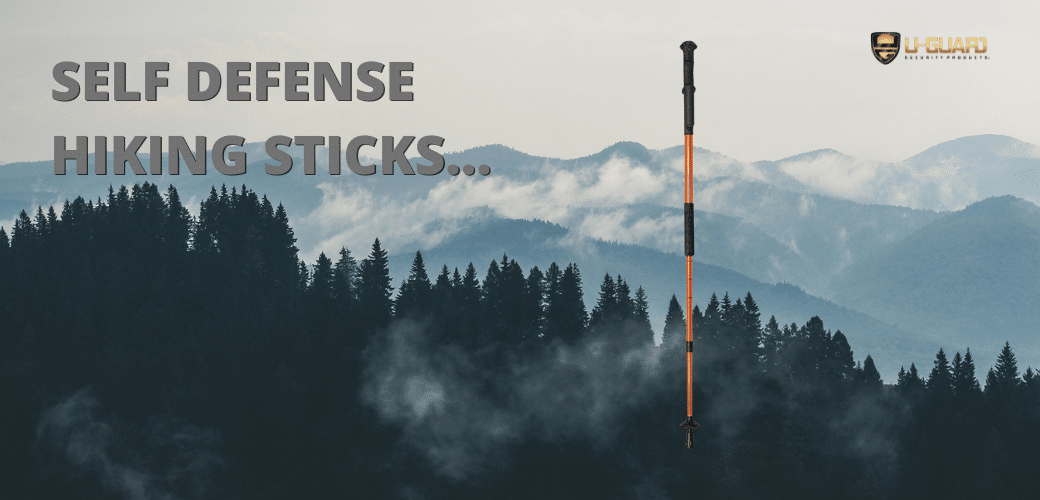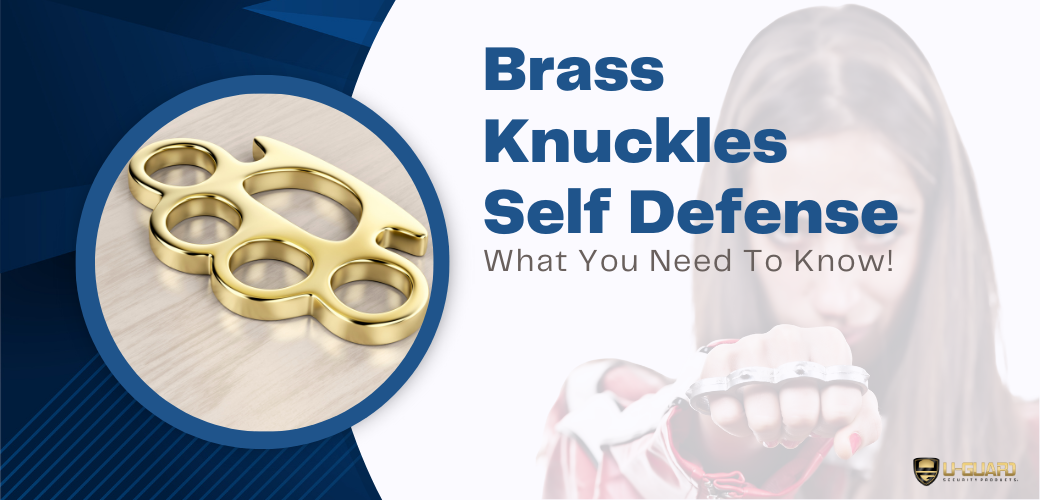When hitting the trails for a hiking adventure, safety should always be a top priority. While most hikers focus on bringing essentials like water, snacks, and navigation tools, one often overlooked item that can provide both safety and adventure is a self defense hiking stick. These specially designed hiking sticks not only help with stability and support during hikes but also serve as a valuable tool for self-defense in case of emergencies. In this blog post, we will explore the world of self defense hiking sticks, including what they are, how they can be used, and the best options available on the market.
Understanding Self-Defense Hiking Sticks
Self-defense hiking sticks, a vital addition to any outdoor enthusiast’s gear, are not your average trekking poles. These innovative devices are designed with the dual purpose of aiding mobility on rough terrain and serving as a potential means of protection against threats encountered on the trail. Unlike conventional hiking sticks, which are primarily focused on providing balance and reducing the strain on the knees and ankles, self-defense hiking sticks incorporate additional features that can be employed in defensive situations.
These sticks may come equipped with various integrated safety mechanisms such as retractable blades, which can be discreetly housed within the stick and deployed when necessary. Other models might feature built-in stun guns, delivering a non-lethal electric shock to deter aggressors, or even pepper spray dispensers for creating distance between the hiker and a potential threat. The intention behind these enhanced features is not to encourage confrontation, but rather to offer hikers a means of last resort should they find themselves in peril.
The materials chosen for these self-defense hiking sticks are selected for their robustness and reliability under stress. High-grade aluminum or carbon fiber is often used, ensuring the stick can endure the force of defensive use without compromising its integrity. This durability is crucial, as the stick must also perform its primary function of supporting the hiker over varied and potentially challenging terrains.
In terms of design, manufacturers of self-defense hiking sticks strive to maintain a balance between functionality and discretion. The appearance of these sticks often mimics that of traditional hiking poles to avoid drawing unnecessary attention or causing alarm. This subtlety in design ensures that hikers can carry them openly without signaling their defensive capabilities, blending the practical aspects of hiking support with the strategic advantage of self-defense preparedness.
Beyond their built-in defensive mechanisms, these sticks also offer auxiliary features that enhance their utility on the trail. Ergonomic handles for comfortable grip, adjustable lengths to match the user’s height and the terrain’s demands, and rugged tips for improved traction are standard among high-quality models. The integration of these features demonstrates the thoughtful consideration of the hiker’s overall experience, ensuring that the stick is a versatile tool that contributes positively to the adventure, all while providing peace of mind through its hidden defensive capabilities.
Specialized Self-Defense Features in Hiking Sticks
In the realm of outdoor adventure, the evolution of gear has always aimed at enhancing the safety, comfort, and efficiency of the enthusiast. Among these innovations, the incorporation of specialized self-defense features into hiking sticks marks a significant leap forward. These unique hiking sticks go beyond the traditional role of aiding balance and reducing physical strain, venturing into the domain of personal security on the trail.
The design philosophy behind these self-defense hiking sticks is centered around the integration of defensive tools that remain discreet until required. This approach ensures that the hiker is not burdened with carrying multiple pieces of equipment for different purposes but instead has a multi-functional tool that can handle a variety of situations. Among the specialized features that distinguish these sticks are the built-in mechanisms for personal defense.
One of the most notable features includes the retractable blade mechanism, ingeniously hidden within the body of the stick. This blade can be swiftly deployed in situations where the hiker might need to cut through obstructions or, in dire circumstances, defend against an assailant. The blade is designed to be robust enough to withstand the rigors of outdoor use while being easy to access and deploy.
Another innovative feature found in some models is the inclusion of a stun gun capability. This non-lethal defense option offers hikers the ability to momentarily incapacitate a potential threat, giving them time to escape or seek help. The stun gun component is carefully integrated to ensure safety during normal use, with safety mechanisms in place to prevent accidental discharge.
Additionally, for those concerned about encounters with both two-legged and four-legged threats, the option of a pepper spray dispenser adds another layer of security. Positioned for easy access, the dispenser allows for a quick response to an approaching threat, creating a deterrent barrier that can stop an attacker in their tracks.
It’s important to note that these specialized self-defense features are integrated with careful consideration for legal and ethical use. Manufacturers are cognizant of the laws governing self-defense tools and strive to create products that are compliant while offering genuine protection to the user.
The materials used in these enhanced hiking sticks are chosen for their durability and strength. Aluminum and carbon fiber are preferred for their lightweight yet sturdy properties, ensuring that the stick can endure not just the elements and the terrain but also the added stress of a defensive encounter without failing the user.
This careful blend of design, materials, and functionality encapsulates the essence of modern outdoor gear – tools that not only support the adventure but also safeguard the adventurer.
The Dual Functionality of Hiking Sticks
For outdoor adventurers who value efficiency and multi-purpose gear, dual-functionality hiking sticks emerge as a standout choice. These innovative tools effortlessly bridge the gap between traditional trekking support and personal safety, ensuring that hikers no longer need to choose between the two. The genius of these hiking sticks lies in their ability to offer reliable support across varied terrains while discreetly incorporating self-defense features, all within a design that is both lightweight and user-friendly.
Crafted with the modern hiker in mind, these dual-purpose sticks boast ergonomic handles designed for comfort during extended periods of use. The grip is shaped to fit the hand naturally, reducing the likelihood of fatigue and blistering. This consideration for the user’s comfort extends to the adjustable length of the sticks, allowing for quick customization based on the hiker’s height and the nature of the terrain ahead. Such flexibility ensures that whether ascending steep inclines or navigating uneven paths, the stick can be set to the ideal height for optimal support and balance.
Durability is another hallmark of these versatile hiking sticks. Constructed from materials known for their strength and lightweight properties, such as aluminum or carbon fiber, they are built to withstand the rigors of outdoor exploration without adding unnecessary weight to the hiker’s load. This resilience is crucial, not only for the longevity of the stick as a trekking aid but also for ensuring its reliability as a means of self-defense should the need arise.
In terms of their self-defense capability, these hiking sticks incorporate subtle yet effective features. While details vary by model, options may include a concealed compartment for a retractable blade or a built-in mechanism for a stun gun or pepper spray. These elements are integrated in such a way that they do not interfere with the stick’s primary function as a support tool during hikes. Instead, they remain unobtrusive, ready to be deployed swiftly and safely if a situation demands it.
By harmonizing the essential aspects of trekking poles with the strategic inclusion of self-defense tools, dual-functionality hiking sticks represent a pinnacle of outdoor gear innovation. They encapsulate the spirit of adventure, encouraging exploration with an added layer of security. This seamless blend of support and protection empowers hikers to venture further with confidence, knowing they are well-equipped to handle both the challenges of the trail and potential threats with a single, efficient tool.
Using a Standard Hiking Stick for Self-Defense
Navigating the wilderness or backcountry trails, a traditional hiking stick is more than just a tool for balance and support; it’s a potential means of self-defense in unpredictable situations. While specialized sticks equipped with defensive gadgets provide an advanced level of protection, don’t underestimate the value of a standard hiking stick in a critical moment. The key to effectively using a standard hiking stick for self-defense lies in understanding its capabilities and mastering a few basic techniques.
First and foremost, a sturdy hiking stick can serve as an extension of one’s own body, offering a greater range to fend off or intimidate an approaching animal or assailant. The stick can be thrust forward towards an aggressor, aiming for sensitive areas such as the nose or throat of an animal or the stomach and groin of a human attacker, to create an immediate physical barrier. This sudden action can buy precious moments to retreat or prepare for further defensive actions.
In addition to serving as a physical barrier, the hiking stick can also be wielded to deliver defensive strikes. Holding the stick with both hands increases control and power behind swings, which can be directed at an attacker’s limbs or head to deter their advance. It’s important to practice these movements to ensure they can be executed with confidence if needed.
Moreover, the hiking stick can be used to leverage one’s environment. For example, it can be wedged between rocks or roots to create an improvised snare or barrier, complicating an attacker’s approach. The stick can also be utilized to make noise by striking it against trees or the ground, potentially attracting attention or scaring off wildlife.
While practicing these techniques, remember to maintain a firm grip and stance to maximize the effectiveness of the stick as a defensive tool. Regularly incorporating these maneuvers into your hiking or trekking routine can help build muscle memory, ensuring you’re prepared to use your hiking stick defensively if the situation arises.
Understanding how to utilize a standard hiking stick in these defensive capacities enhances not only your safety but also your confidence on the trail. It reinforces the notion that sometimes, the simplest tools at our disposal can prove invaluable in moments of need.
The Best Hiking Stick for Self-Defense and Trekking
Selecting the ideal hiking stick that serves both as a reliable trekking companion and a formidable tool for self-defense involves careful consideration of several key attributes. Among the most critical factors to evaluate are the stick’s material composition, its adaptability to various environments, and the inclusion of multifunctional features that enhance its utility without compromising its core functions.
Materials such as high-grade aluminum or carbon fiber are preferred for their excellent balance between lightweight characteristics and robust durability. These materials ensure that the stick can withstand significant force, whether from the rigors of challenging trails or in the unlikely event it needs to be used defensively.
An adjustable length feature is paramount for versatility, allowing hikers to modify the stick’s height to suit the terrain’s demands—be it ascending steep slopes or maneuvering through narrow pathways. This adjustability also plays a crucial role in ensuring the stick can be swiftly adapted for defensive purposes, making it an unassuming yet effective deterrent against potential threats.
A standout hiking stick for self-defense and trekking should also incorporate ergonomic design elements. An ergonomic handle, preferably with a non-slip grip, provides comfort during prolonged use and ensures a secure hold, critical during defensive maneuvers. Additionally, shock-absorbing capabilities, either through the tip design or internal mechanisms, contribute to a more pleasant hiking experience by minimizing the impact on joints and muscles.
For those seeking enhanced safety features, options that integrate discreet self-defense tools can offer added peace of mind. Whether it’s a concealed compartment for a retractable blade, a built-in stun gun feature, or a pepper spray dispenser, these specialized enhancements should be seamlessly integrated, maintaining the stick’s primary function as a support tool while ensuring readiness for any contingency.
In essence, the best hiking stick for self-defense and trekking is one that harmoniously blends durability, adaptability, and ergonomics with thoughtful inclusion of defensive features. This combination not only empowers hikers to explore with confidence but also ensures they are well-prepared to navigate both the physical challenges of the trail and the unexpected scenarios that might arise during their adventures.





